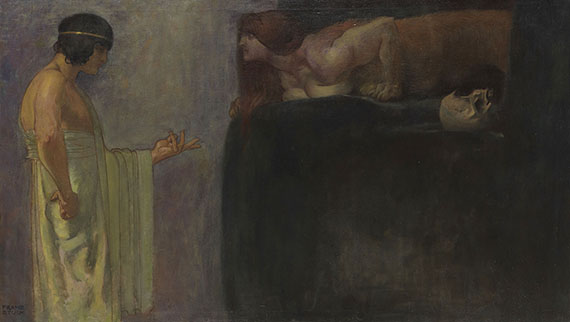Dictionary


Regence
Regency (French: la régence) refers to the regency of Duke Philipp II of Orléans (1715-23), as the guardian of Louis XV, who was then still a minor. The Regency period lasted from 1710 to 1730. It constituted the transition from playful high baroque Louis Quatorze to the entirely distinct rococo Louis Quinze style. Regency architecture frequently consisted of city palaces (Hôtels) with a large degree of exterior flatness. Flat pilasters replaced playfully arranged columns and projected cornices, and surfaces lost their depth, and dramatic chiaroscuro effects.
One of the most important architects of the epoch was Robert de Cotte (1656-1735), who was only eclipsed by Germain Boffrand (1667-1754). A new focus on interior design produced various stucco works and decorative motifs, which spanned ceilings and walls. The most popular form of ornament was strap work, which is thought to have been invented by Jean Bérain (1637-1711). Other popular motifs included gargoyles or palmettes. The interior of de Cotte’s Hôtel Toulouse (1727) in Paris is a classic example of Regency decoration. One of the key artists of the Regency period was the painter Nicolas de Largillière (1656-1746), who executed lively portraits in light, informal colours. Jean François de Troy’s (Detroy, 1679-1752) oeuvre, which consisted primarily of mythological and genre scenes, represented the transition to Louis Quinze high rococo. The main exponent of Regency painting was Antoine Watteau (1684-1721), who was influenced by Rubens and died at a young age. Watteau made ‚fêtes galantes’ a new and effective style of painting.
Regency (French: la régence) refers to the regency of Duke Philipp II of Orléans (1715-23), as the guardian of Louis XV, who was then still a minor. The Regency period lasted from 1710 to 1730. It constituted the transition from playful high baroque Louis Quatorze to the entirely distinct rococo Louis Quinze style. Regency architecture frequently consisted of city palaces (Hôtels) with a large degree of exterior flatness. Flat pilasters replaced playfully arranged columns and projected cornices, and surfaces lost their depth, and dramatic chiaroscuro effects.
One of the most important architects of the epoch was Robert de Cotte (1656-1735), who was only eclipsed by Germain Boffrand (1667-1754). A new focus on interior design produced various stucco works and decorative motifs, which spanned ceilings and walls. The most popular form of ornament was strap work, which is thought to have been invented by Jean Bérain (1637-1711). Other popular motifs included gargoyles or palmettes. The interior of de Cotte’s Hôtel Toulouse (1727) in Paris is a classic example of Regency decoration. One of the key artists of the Regency period was the painter Nicolas de Largillière (1656-1746), who executed lively portraits in light, informal colours. Jean François de Troy’s (Detroy, 1679-1752) oeuvre, which consisted primarily of mythological and genre scenes, represented the transition to Louis Quinze high rococo. The main exponent of Regency painting was Antoine Watteau (1684-1721), who was influenced by Rubens and died at a young age. Watteau made ‚fêtes galantes’ a new and effective style of painting.
Offers
Headquarters
Joseph-Wild-Str. 18
81829 Munich
Phone: +49 89 55 244-0
Fax: +49 89 55 244-177
info@kettererkunst.de
Louisa von Saucken / Undine Schleifer
Holstenwall 5
20355 Hamburg
Phone: +49 40 37 49 61-0
Fax: +49 40 37 49 61-66
infohamburg@kettererkunst.de
Dr. Simone Wiechers / Nane Schlage
Fasanenstr. 70
10719 Berlin
Phone: +49 30 88 67 53-63
Fax: +49 30 88 67 56-43
infoberlin@kettererkunst.de
Cordula Lichtenberg
Gertrudenstraße 24-28
50667 Cologne
Phone: +49 221 510 908-15
infokoeln@kettererkunst.de
Hessen
Rhineland-Palatinate
Miriam Heß
Phone: +49 62 21 58 80-038
Fax: +49 62 21 58 80-595
infoheidelberg@kettererkunst.de
We will inform you in time.




